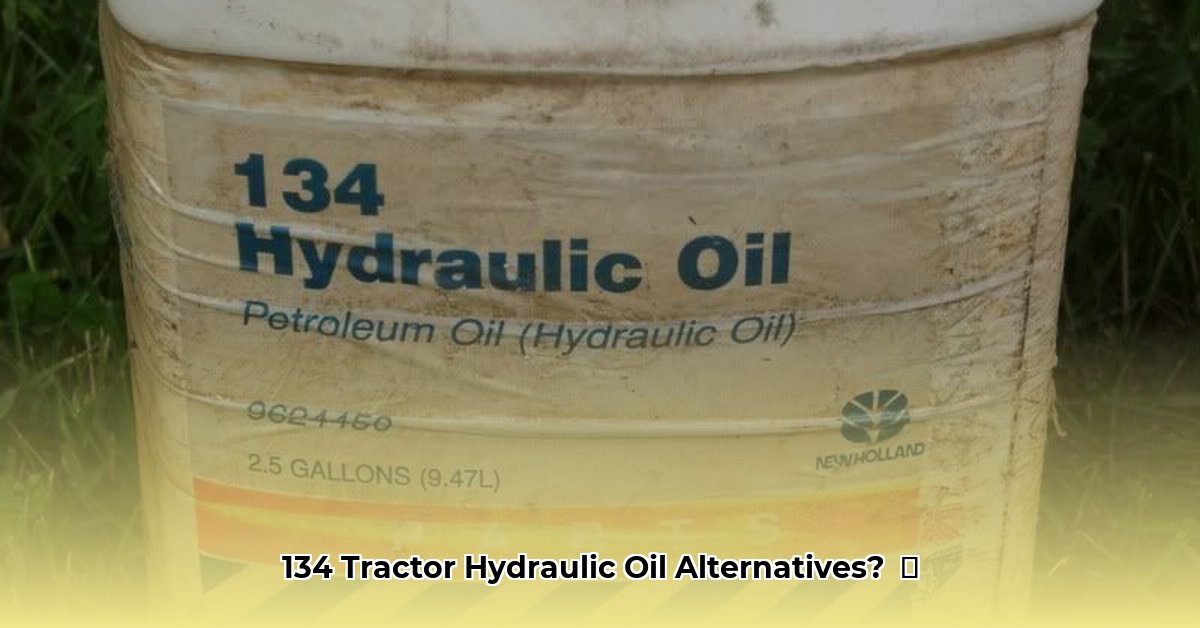
Keeping your tractor running smoothly is crucial, but the high cost of Original Equipment Manufacturer (OEM) hydraulic fluid like New Holland NH 134 can significantly impact your bottom line. This article explores cost-effective alternatives, comparing OEM fluids to generic options available at Tractor Supply Company (TSC), Walmart, and NAPA, while emphasizing the potential risks and uncertainties involved. We'll provide a step-by-step guide to help you make informed decisions. For more on maintaining your hydraulic system, check out these tractor hydraulic hoses.
OEM vs. Generic Hydraulic Fluid: A Comparative Analysis
Original Equipment Manufacturer (OEM) hydraulic fluid, specifically formulated for your tractor, ensures optimal performance and longevity. However, its cost is considerable. Generic Universal Tractor Fluid (UTF), widely available at TSC, Walmart, and NAPA, offers a potentially substantial price reduction. Many farmers report successful long-term use of generic UTF, suggesting viable alternatives. However, rigorous, independent testing to validate these anecdotal reports is lacking.
Understanding the Risks of Generic Hydraulic Fluids
While the cost savings from generic UTF are tempting, several uncertainties warrant consideration:
Warranty Implications: Using non-OEM fluid may void your tractor's warranty, potentially leading to significant repair costs. Always check your warranty details before making a switch. A seemingly small initial saving could be erased by future repair bills.
Long-Term Performance: The long-term performance and protective qualities of generic fluids might not match those of OEM fluids. While some farmers report success, inconsistent quality and a lack of standardized testing represent considerable risk. This risk is amplified when considering the long-term health of your tractor's hydraulic components.
Formulation Variability: Generic UTF formulations vary considerably across brands and batches. A fluid that performs well in one tractor might not perform as well in another. This makes generalized recommendations challenging.
Actionable Intelligence: A Step-by-Step Guide
To make an informed decision, follow this practical approach:
Comprehensive Price Comparison: Begin by comparing prices at TSC, Walmart, NAPA, and other local suppliers. Factor in sales and bulk discounts. Remember to account for the price per unit volume.
Controlled Small-Scale Trial (Optional): Consider a limited trial of generic UTF on older or less critical equipment. This lets you assess performance without significant risk to your main machinery. Thorough observation is crucial.
Meticulous Record Keeping: Maintain a detailed log of fluid type, operating hours, maintenance costs, and any observed performance issues. This long-term data is crucial for evaluating the true cost-effectiveness of each fluid.
Warranty Review: Carefully review your tractor's warranty to understand the implications of using non-OEM fluids. Consult the manufacturer directly if you have clarifying questions. This proactive review potentially mitigates future problems.
Regular Fluid Analysis (Optional): Periodically analyze your hydraulic fluid to detect contamination or degradation. This proactive monitoring allows timely intervention and prevents potentially costly repairs.
Risk Assessment Matrix
This matrix summarizes the relative risks associated with different fluid choices:
| Fluid Type | Performance Risk | Cost Risk | Warranty Risk |
|---|---|---|---|
| OEM (e.g., NH 134) | Low | High | Low |
| Generic UTF | Medium | Low | Medium |
Note that these are general assessments. Actual risk levels depend on factors like equipment age, fluid brand, and operating conditions.
Responsible Disposal: Environmental Considerations
Remember that used hydraulic fluid is hazardous waste. Always comply with local regulations for proper disposal to protect the environment.
Conclusion: Balancing Cost and Risk
While generic UTF offers potential cost savings, carefully weighing the risks is essential. The actionable steps outlined above provide a framework for informed decision-making. Further research and responsible disposal practices are paramount in ensuring both economic efficiency and long-term equipment reliability. Remember that the long-term cost effectiveness of each option depends heavily on your individual circumstances. This detailed assessment should empower you to make the best choice for your farm.